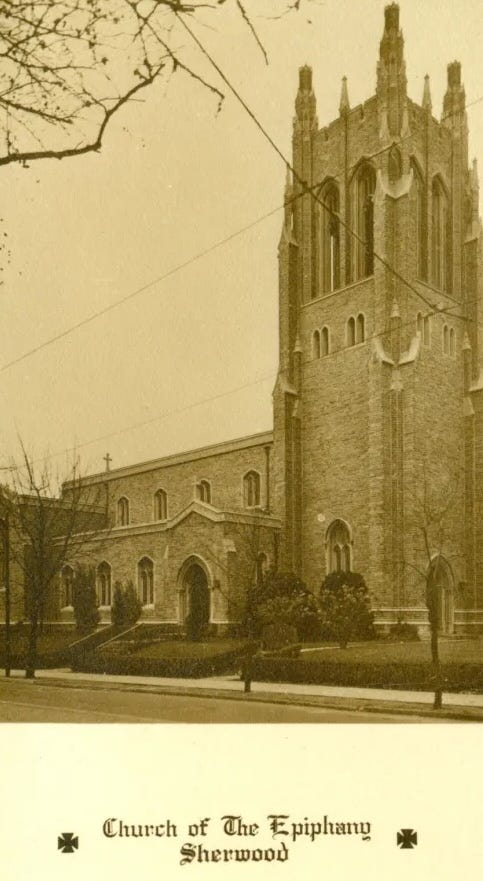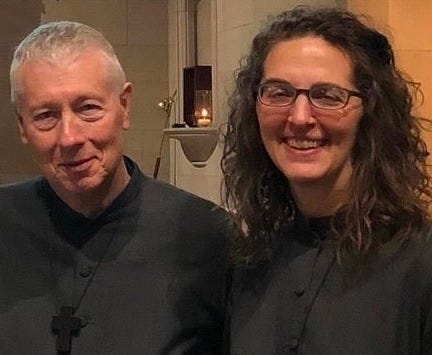In 1972, the Bishop asked Brother Robert and his friend Mike to become the priests-in-charge of a small parish in West Philadelphia. It was a wonderful experience. Some beautiful people committed to Christ and the church. There were also a number of odd touches, but of course that’s common to most small churches.
We might highlight two items, though. First, at the time it had been many years since the Episcopal Church said that women could be on vestries. Yet at this parish, there were no women on the vestry. And there was only one treasurer’s report each year. It was provided in a meeting right before the Christmas Eve Mass. That was also the only time the treasurer attended church.
A few years later, Robert became the vicar of a South Philadelphia parish, and he asked who was on the vestry. The response was, “we can’t remember.” He responded to the situation by simply ignoring the canons and asking people if it would be all right to reconstitute a vestry this way: There would be a series of meetings to assess the state of the parish and what everyone wanted to do going forward. The meetings took place before the Sunday Eucharist and Robert said that whoever showed up at all the meetings would be the vestry. Everyone thought that was a splendid idea and they went forward.. Within about a year, the parish was back in conformity with the canons.
How do we give some slack to small parishes?
A first step might be to acknowledge that “new occasions teach new duties.” Over the years, the national church and many dioceses have put in place a variety of canons and regulations that parish churches are expected to conform to. Most were well intended, as well as reasonable in the context in which they were established. Or at least they were reasonable for many parishes. But there are some ways of operating that no longer make any sense and may not have made sense for small parishes forty or fifty years ago. If your parish church has an average Sunday attendance of twenty-five and a number of them are elderly and no longer willing to serve on vestries, and the vicar is very part-time, there may need to be some adjustments in the parish’s structures and processes.
You can easily have a situation where you’ve only got five people willing to serve on a vestry. And next year it may be just four people who are able and willing. The priest may simply not have the time to fulfill all the required paper work and attend all the conferences and meetings the diocese expects a priest to engage. It’s true that some very small parishes are truly disintegrating and struggle with even the most basic things. Yet most small parishes we know of offer worship, form their members in both liturgy and community, and serve in some small yet meaningful ways as a sanctifying presence for the world. (Purposes of he Parish Church)
So what are we to do when the rules say you have to have term limits? That people from the same family cannot serve at the same time? That wardens can only be in place for one term? That vestries must have a certain number of members?
We don’t have all the answers, but we think that part of it may lie in dioceses helping small parishes stay connected to the broader church. And not in a bureaucratic way, but in a relational way. Michelle, serving as Senior Warden in her parish, had a very difficult situation last year that needed to be addressed. The canons just didn’t fit. Michelle reached out to the diocese with some trepidation and ended up having a lovely experience with the Canon to the Ordinary. The Canon was open and honest about what needed to happen, and she also took responsibility for the diocese’s own missteps over the years. She helped the rector and the vestry focus on both the future and the parish’s present reality, while helping all of us gain more clarity about the broad responsibilities of sacrificial and unsentimental Christian love.
Instead of experiencing the diocesan office as God’s Rule Enforcers, maybe there are some routine efforts to simply check in and to offer smaller parishes a chance to connect with one another and with diocesan representatives who want to help, not judge. And maybe small parishes can be encouraged to stop assuming they’re not important enough (or, sometimes, too special!), to “bother” the diocese with the things they’re struggling with. Maybe we start with the assumption that we all need to follow the canons. But also know that there can be room for some “slack.” And we might change some canons to fit small parish cultures and circumstances. Maybe some customized processes that satisfy both institutional priorities and the current needs of this parish, this particular microcosm of the Body of Christ.
Our new Presiding Bishop comes to his work with a background in organizational behavior. Our understanding is he has some hopes about changing some of the structures and processes of the church at the national level. He might also have some good ideas that what might be done at the diocesan and parish level to help our norms and standards be more appropriate in the current situation. As always, there will be resistance from those who think that what was established for good reason twenty, or thirty, or forty years ago still holds. We think it’s wise to pay attention to resistance and not assume it’s just sabotage or dislike of change. Ultimately, those longstanding requirements might make perfect sense in some parishes. And be absolutely wrong in others.
This abides,
Sister Michelle, OA & Brother Robert, OA
About Brother Robert, OA & Sister Michelle, OA
Teresa of Avila, Mystic & Monastic Reformer, 1582





